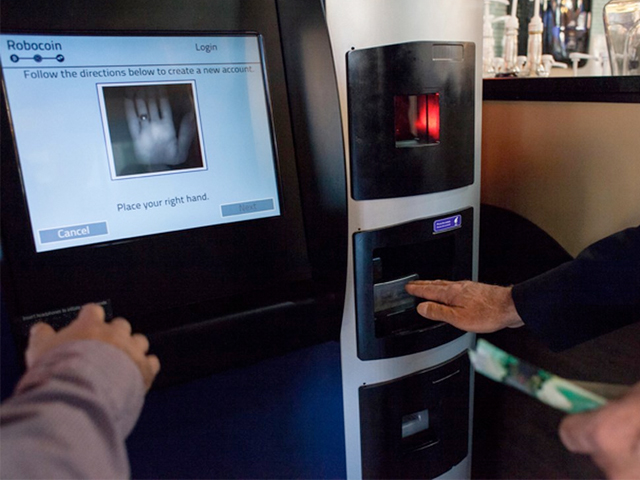Recently, the Bitcoin cryptocurrency has attracted the interest of many people on the planet. The jump in the virtual coin rate by 6 times in a few months confirms the growing attention to this cryptocurrency. A sharp fall in Bitcoin makes investors shudder every time, but after the New Year holidays, this rate usually stabilizes. Many do not believe in the existence and usefulness of money that cannot be felt. And more and more often, this type of currency is not considered something serious and is perceived as a soap bubble or another scam, like a financial pyramid. But with the growth of technology, the development of cyberspace, it is time to accept for granted that cryptocurrency - this is simply a fundamentally new concept, the consequences of which we will still have to face, but cannot predict accurately.

1. The creator of Bitcoin remains a mystery, shrouded in darkness. The most popular version is that the author of this currency is someone named Satoshi Nakamoto. A pseudonym, behind which either one person or a group of like-minded people could hide. But be that as it may, the year of the appearance of the Bitcoin cryptocurrency is definitely called 2008, when the first cryptographic protocol was published. But the launch of the Bitcoin client on the network took place in 2009. A year later, the project changed its owner. The system and all the powers for its configuration passed to Gavin Andresen.
You can often come across rumors that Nakamato himself has acquired a million bitcoins; when translated into the exchange rate, his capital can be estimated at almost 850 million dollars.
2. The main difference between cryptocurrency and cash, which we are so accustomed to, is that it is not controlled by any state. There is no regulator for such a currency, which makes it autonomous and no one has the right to ban it. In other words, Bitcoin is a set of code that passes between computers, and information about any transactions is encrypted. But all participants in the system have access to it.
Bitcoins are often referred to as a "decentralized cryptocurrency."
3. The release of cryptocurrency also lacks a single center responsible for it. This is what formed the next feature of Bitcoin: the issue or "mining" of coins depends on the users of the system. They do it themselves using special video cards on their computers or special equipment. "Mining" — essentially, making money out of thin air — "mining" virtual money, which takes a lot of time and electricity. Complex calculations require powerful equipment. It should be noted that if a client with a super-powerful computer joins the new participants, this will not remain a secret for them. And with the arrival of each new miner, the complexity of the process increases. Many have already created entire "farms" for mining bitcoins.

4. The Bitcoin algorithm contains another interesting fact: the maximum number of coins can be no more than 21 million. As soon as Bitcoin reaches this mark, the mining process will stop. Since the launch of the first client, more than half of the crypto coins have already been issued. Due to the constant increase in the complexity of this process, experts predict the end of currency mining in 2140.
5. The legal status of bitcoins is also an interesting issue, as it is interpreted differently everywhere. This is a weak point for the system. In China, a bank banned bitcoin transactions. France called cryptocurrency speculation. Thailand did not recognize virtual coins as an independent currency. At the government level, bitcoins have no regulator and do not fall under any legal system or laws. Germany decided that bitcoin is more likely to be listed as a private currency, and Singapore called them a digital commodity.

6. Virtual money can be spent on real things. You can buy electronics, clothes and other goods from online stores, or pay for services. It is quite possible to convert electronic coins into real ones, and it will soon become more accessible, as the number of such exchangers and retail outlets accepting "cryptocurrency" is growing rapidly. Canada has acquired the first device that can convert local dollars into bitcoin and vice versa. Robocoin requires a palm print for identification. Money can be deposited in cash or by credit card. In 24 hours, such a device can make transactions worth up to 3 thousand Canadian dollars (about 2900 US dollars).
7. A common feature of all money, and Bitcoin is no exception, is susceptibility to theft. It is difficult to find exact confirmation of this fact, but sometimes such cases occur. There was a case of a statement from a user about the disappearance of 25 thousand bitcoins from a wallet. Also, in addition to this, there are cases of bitcoin theft as a result of hacker attacks.
8. Bitcoin is not the only cryptocurrency. But it is the very first of its kind, which gained serious popularity. Alternative types appeared after Bitcoin - Litecoin, which is mined 4 times faster, Peercoin - the limit of release has not yet been established, Namecoin, which uses modified Bitcoin algorithms, and many others.

9. The Bitcoin system is characterized by the anonymity of payments, which attracts the attention of the criminal world. The most famous example is the FBI-closed online drug store Silk Road. The Tor network was used for this, since it is not indexed by search engines. In addition to electronics, the site sold psychotropic substances, pornographic materials, and prohibited books. The FBI detained the owner of the site and seized his servers with the bitcoins that were stored there. A few days later, another wallet that was involved in the operations of this same site was arrested in the United States. Almost 30 thousand bitcoins were found on it, which is equivalent to 25 million dollars.
10. The closed Tor network also became famous for the fact that the Assassination Market website appeared on its base. The peculiarity of this platform was the offer for users to pay for the murder of famous political figures. To pay for the services of a killer, each visitor had to transfer 1 bitcoin, with an encrypted date of the alleged murder. The founders of the resource received 1% from donations as a commission.
11. In the first year of Bitcoin mining, a UK resident mined 7,500 bitcoins using a laptop. An accidental spill of lemonade led to the owner disassembling the gadget into parts to save the hard drive with the coins. But a few years later, the hard drive was thrown into a landfill. The programmer regretted his decision when the rate of the "cryptocurrency" jumped to $ 1,000. Attempts to find his treasure in the landfill were useless, and about $ 6 million disappeared from the programmer.

12. At the beginning of cryptocurrency mining, it was impossible to pay for anything with it. After some time, an American programmer decided to prove the opposite. He exchanged 10 thousand electronic coins for two pizzas. At that time, it cost $25. Today, this lunch is considered the most expensive in history, as it is about $8.5 million.












